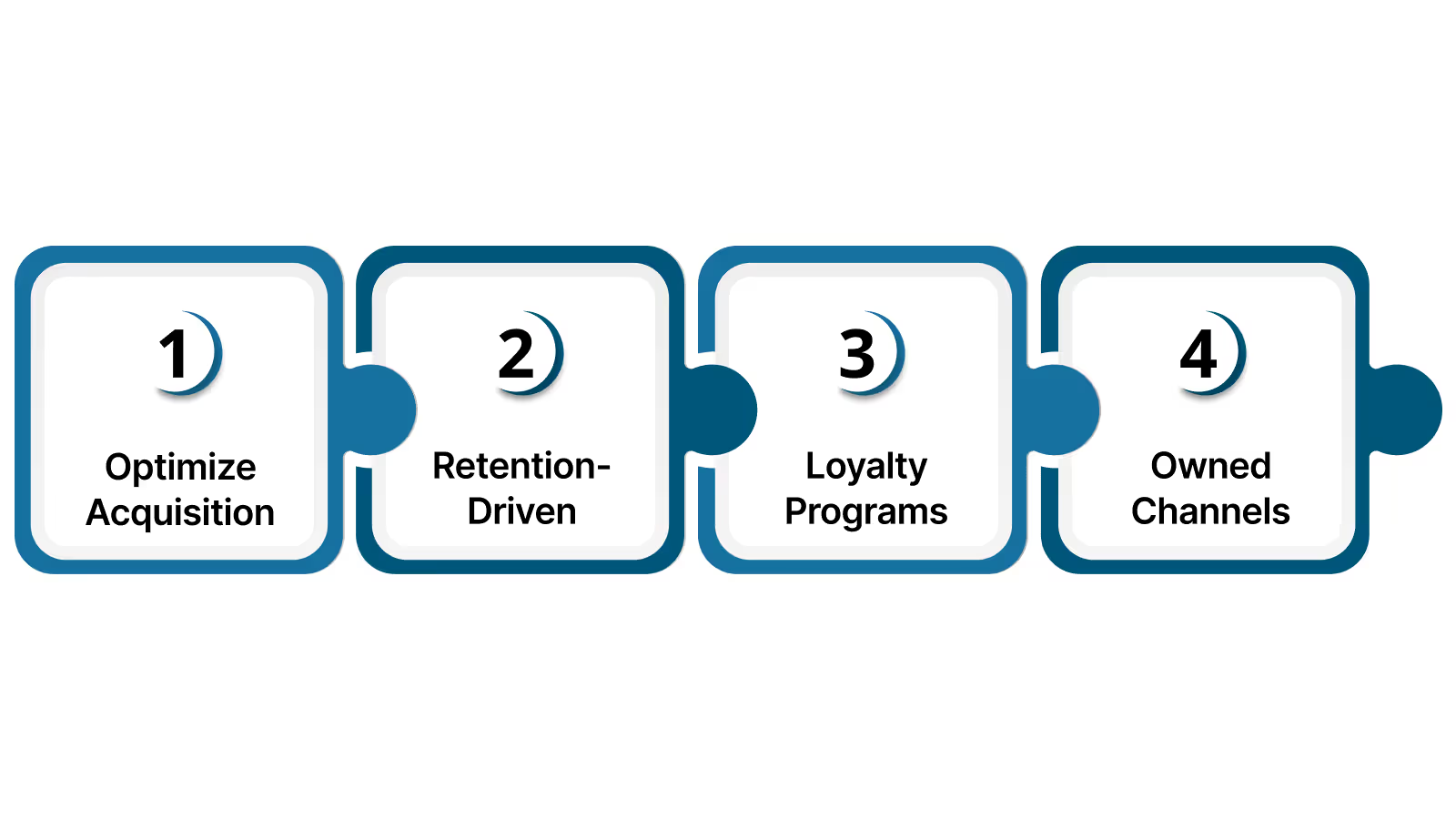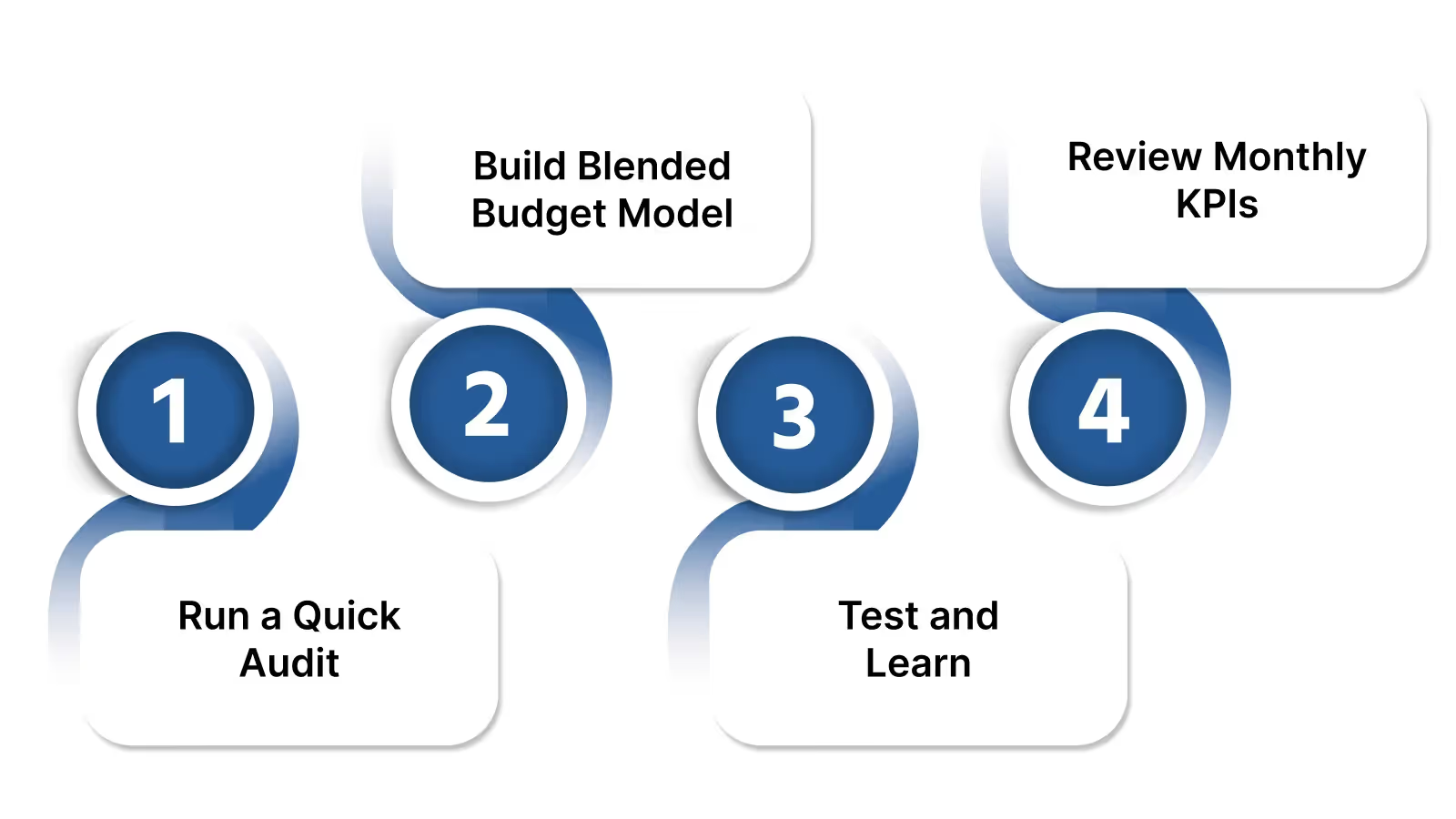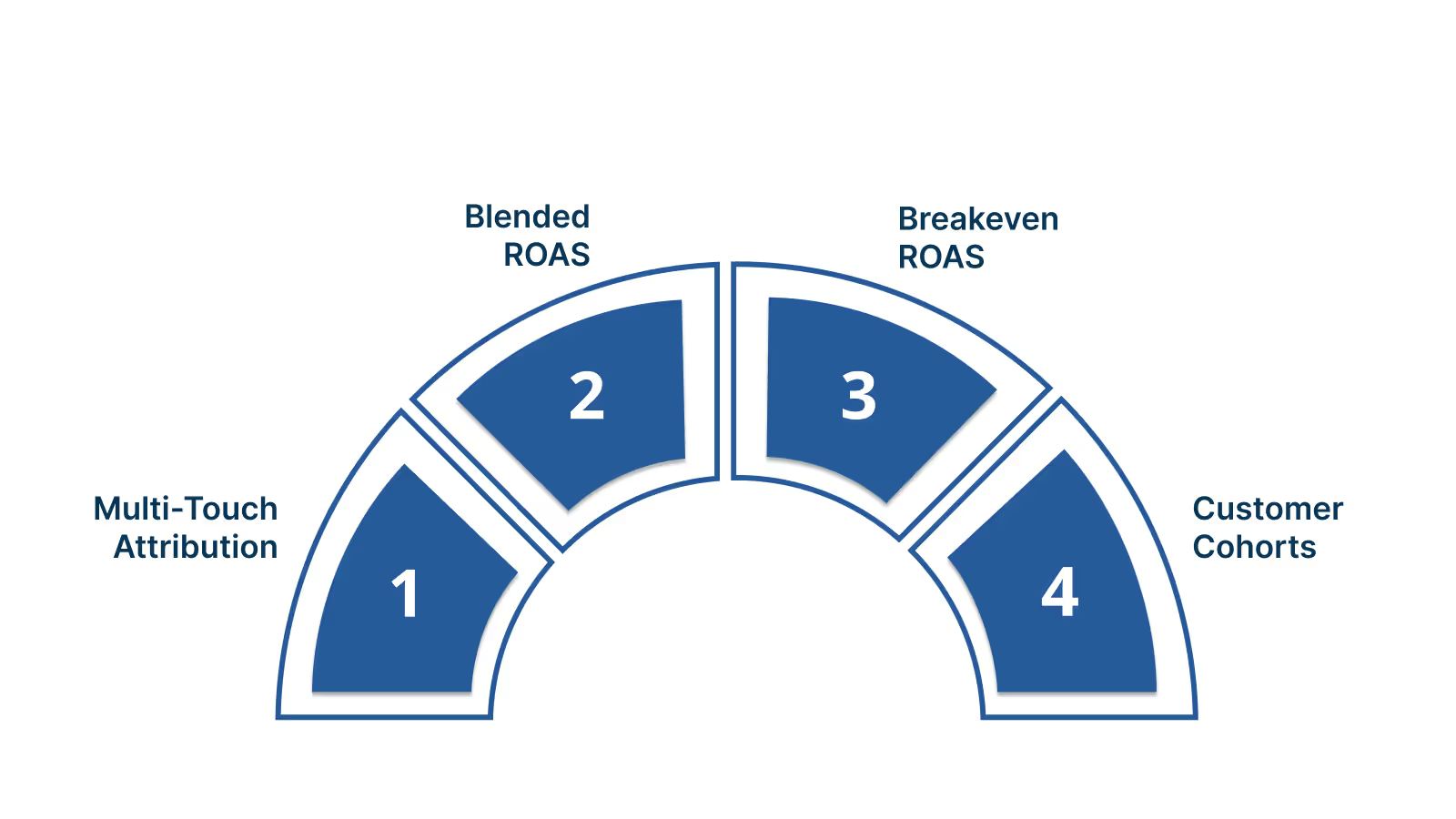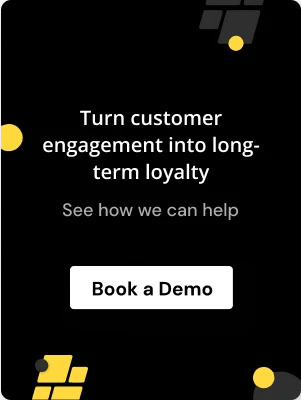.avif)
.avif)
For Shopify store owners, growth often starts with one question: How much am I getting back from what I spend?
ROAS (Return on Ad Spend) is a metric that measures how effectively your ad budget turns into revenue. It’s often used to gauge the success of paid campaigns, helping you understand which ads deliver the best financial return.
On the flip side, customer retention focuses on how well you keep customers coming back after that first sale. High retention means stronger lifetime value (LTV), reduced customer acquisition costs (CAC), and more predictable revenue over time.
Many brands chase ROAS at the expense of loyalty, but the most successful ones know that true profitability comes from balancing both.
In this guide, we’ll break down what ROAS really means, why retention is your secret growth lever, and how to align short-term ad wins with long-term customer value. So, let’s take a look at how to create a marketing strategy that balances performance with long-term customer loyalty.
ROAS Fundamentals
ROAS is a core metric for Shopify store owners. It tells you how much revenue you earn for every dollar spent on advertising. The formula goes:
ROAS = Revenue from Ads ÷ Cost of Ads
So, if you spend $500 on Facebook ads and generate $2,000 in sales, your ROAS is 4:1. Most e-commerce brands aim for a ROAS between 3:1 and 5:1, depending on margins and customer acquisition goals.
But while ROAS is great for tracking immediate returns, it has its limitations. Traditional ROAS only looks at direct revenue from a single campaign and doesn’t account for longer-term value like repeat purchases or brand impact. It also ignores backend costs like fulfillment, shipping, and customer service, leading to a distorted view of profitability.
That’s where a few advanced metrics come in.
- Blended ROAS includes all traffic sources (paid + organic) for a more holistic picture.
- Non-click ROAS measures value influenced by views, not just clicks.
- And POAS (Profit on Ad Spend) factors in product costs to show true profitability.
For smarter growth decisions, especially as acquisition costs rise, these deeper metrics offer more clarity than ROAS alone.
But generating a sale through ads is just the beginning; what matters next is keeping that customer coming back for more.
Also read: 9 Successful Loyalty Program Examples to learn from in 2025
The Role of Customer Retention

While ROAS highlights short-term returns, customer retention shows how well your brand builds lasting relationships, and that’s where real profitability lies. Here are the key metrics to understand:
- Retention Rate: The percentage of customers who make repeat purchases within a given period.
- Churn Rate: The inverse of retention, showing how many customers stop buying from you over time.
- CLTV (Customer Lifetime Value): The total revenue a customer is expected to generate over the course of their relationship with your brand.
Retention is especially valuable for Shopify brands. Why? Because acquiring a new customer can cost 5–7x more than retaining an existing one. Plus, repeat customers are 67% more likely to spend more per order compared to new ones. And with rising ad costs, building loyalty gives you a more stable and profitable foundation for growth.
So naturally, strong retention leads to better margins, higher repeat purchase rates, and more predictable revenue. This is especially true when retention is paired with a great post-purchase experience, loyalty programs, or personalized marketing.
To truly unlock sustainable growth, the key isn’t choosing between ROAS and customer retention but learning how to align them into one cohesive strategy.
Aligning ROAS with Customer Retention
Focusing solely on short-term ROAS can give Shopify brands tunnel vision. It often leads to over-investment in cold traffic and aggressive campaigns that spike conversions but fail to build lasting relationships.
This short-term mindset can hurt your brand equity, weaken owned channels like email and SMS, and create a revolving door of one-time buyers.
The real opportunity lies in aligning performance marketing with retention strategy. That means striking a balance between brand-building campaigns and direct-response ads. When done right, this strategy warms audiences and boosts the long-term effectiveness of your paid media.
Measuring synergy here involves tracking not just click-based conversions but also view-through conversions, post-purchase engagement, and retention metrics across time. To make smarter decisions, you need to layer retention KPIs into your ROAS model:
- Use LTV-to-CAC ratios to evaluate customer profitability, not just campaign-level ROAS.
- Track retention rates by acquisition source to see which channels bring the most loyal customers.
- Consider blended ROAS across paid and organic touchpoints to reflect true performance.
By shifting from a campaign-centric view to a customer-centric model, you’ll set your store up for sustainable, scalable growth.
Tactics to Balance Acquisition and Retention

Balancing ROAS with retention isn’t just about strategy; execution is also a critical lynchpin to success. These four tactics will help Shopify brands fine-tune acquisition efforts while building loyalty that pays off long-term.
A. Optimize Acquisition for Quality & Efficiency
Acquiring customers profitably starts with smarter targeting. Use lookalike audiences, interest stacking, and intent-based segments to attract higher-LTV shoppers. Add negative keywords and refine audience exclusions to filter out low-intent clicks that drag down ROAS.
Your landing pages should match ad messaging, load fast, and remove friction to maximize conversions. Use tools to flag underperforming campaigns before they drain your budget so you can adjust ad spend quickly and protect profit margins.
B. Retention-Driven Paid Strategies
Paid media isn’t just for new customer acquisition; it’s a powerful tool for driving retention, too. Use remarketing and dynamic retargeting to bring back previous buyers with relevant products or offers.
Build VIP segments using LTV and purchase history, then serve ads with exclusive early access or rewards. These micro-targeted campaigns deepen brand affinity and extend the customer lifecycle, making each acquisition more valuable over time.
C. Loyalty Programs & Personalization
Retention thrives on recognition. Launch points-based loyalty programs or referral incentives to keep customers engaged and coming back. Not only do these increase frequency, but they also turn your existing base into brand advocates.
Platforms like Nector allow loyalty integrations, so you can serve exclusive offers to high-value customers.
Use zero-party and first-party data collected via quizzes, purchase behavior, or email interactions to personalize product recommendations, discounts, and content. A tailored experience not only increases conversion but also strengthens the emotional connection, which is key to keeping shoppers loyal in a crowded market.
D. Owned Channels & Community Building
To reduce overreliance on ads, invest in owned channels like email, SMS, and organic content. A well-segmented email list allows you to run high-performing campaigns at nearly zero marginal cost. SMS can drive urgency and deepen personalization with real-time communication.
Beyond that, foster community through social content, reviews, UGC campaigns, and post-purchase engagement. Gradually shift part of your paid media budget to nurture these channels, giving you long-term ROI without the CAC spikes.
Over time, your brand becomes the channel, and retention becomes a natural outcome.
Step-by-Step Implementation Guide

Balancing ROAS and customer retention doesn’t have to be overwhelming. Here’s a simple plan Shopify store owners can follow:
- Run a Quick Audit: Start by reviewing your current ROAS, retention rate, and LTV. Identify gaps: are your best-performing campaigns bringing in repeat buyers or just one-time sales?
- Build a Blended Budget Model: Allocate spend across both acquisition and retention. For example, dedicate 70% to top-of-funnel and 30% to remarketing or loyalty-focused campaigns.
- Test & Learn: Launch a small-scale loyalty program or create a custom retargeting segment using past purchase behavior. Track engagement and repeat order rates.
- Review Monthly KPIs: Compare acquisition vs. retention metrics every month. Monitor trends in CAC, LTV, churn, and blended ROAS to inform future budget shifts.
With consistent testing and measurement, you’ll build a growth strategy that performs in the short term and compounds over time.
Measurement & Attribution for a Unified View

To truly balance ROAS with customer retention, you need measurement models that go beyond last-click attribution. Traditional setups often credit only the final touchpoint, undervaluing the long-term impact of brand-building or retention campaigns.
- Shift toward multi-touch attribution, which distributes credit across the full customer journey, so you can see how email, paid ads, content, and social all contribute to revenue.
- Pair this with blended ROAS, which looks at total revenue versus total marketing spend across channels. This gives a clearer picture of performance, especially when retention campaigns are working behind the scenes to lift customer value.
- You should also calculate your breakeven ROAS, the point at which your ad spend covers your product costs and overhead. Use this formula:
Breakeven ROAS = 1 ÷ Profit Margin
(e.g., if you have a 30% profit margin, breakeven ROAS = 3.33)
- Track customer cohorts over time. Compare CAC to LTV across different acquisition channels and retention efforts. This helps identify which segments bring the highest long-term value and where to double down for future growth.
Balancing ROAS with retention is what transforms short-term wins into lasting, scalable growth rooted in both performance and genuine customer loyalty.
And, if you're looking for a smarter way to boost customer retention, Nector gives you the tools to turn one-time buyers into loyal, high-value customers.
Also read: Maximizing Growth with CLV: A Strategic Loyalty Approach
Boosting Loyalty and Repeat Sales with Nector
Nector helps Shopify stores turn customers into repeat buyers with a fully customizable loyalty program. Reward every action: purchases, referrals, reviews, and let shoppers redeem coins for discounts, free shipping, or exclusive perks. With gamified tiers, limited-time campaigns, and seamless checkout redemption, Nector makes loyalty simple, engaging, and effective.
Here’s how one fast-growing brand used Nector to drive real results:
A leading cosmeceutical brand was looking to deepen customer retention and drive more engagement without disrupting their existing shopping experience. Their goals: boost repeat purchases, incentivize referrals and reviews, and integrate loyalty touchpoints across tools like Stamped, Klaviyo, and GoKwik.
With Nector, they launched a fully integrated system that combined a Loyalty Program, Referral Program, and Rewards for Reviews, creating a consistent and rewarding customer journey. A VIP Tier structure added further incentives for high-value shoppers, fostering deeper loyalty.
The results:
- 9.63% of total orders were loyalty-driven
- 50.16% of repeat customers used loyalty rewards
- 20.63% coin redemption rate showed strong engagement
- 17.31% referral completion rate helped boost acquisition
- Over $35,000 in revenue directly attributed to Nector-driven programs
This partnership highlights how Nector’s seamless integrations and flexible reward mechanics can convert everyday transactions into lasting relationships and meaningful growth.

Conclusion: Creating Growth That Lasts
The smartest Shopify brands aren’t just chasing high ROAS. The key in today’s personalized marketing landscape is to build customer relationships that drive repeat revenue over time.
By understanding the full picture, from initial acquisition to long-term retention, you can make more strategic decisions, improve margins, and unlock sustainable growth. Don’t think of balancing short-term ad performance with long-term customer value as a trade-off because it’s really a multiplier.
And if retention is your top priority, Nector delivers. Its loyalty tools, referral programs, and personalization features help Shopify brands strengthen relationships and drive repeat sales effortlessly. Start building loyalty that lasts, and let Nector turn every customer interaction into a reason to come back.
Ready to grow with smarter retention? Book a demo with Nector and see how loyalty can power your Shopify store’s next stage of growth.
FAQs
How do you measure customer retention?
Customer retention is typically measured using the retention rate, which calculates the percentage of customers who make repeat purchases over a specific period. The formula is:
Retention Rate = [(Customers at End of Period – New Customers) ÷ Customers at Start of Period] × 100
What is a good customer retention rate?
This varies by industry, but for eCommerce brands, a retention rate between 30% and 40% is considered strong. High-performing Shopify stores with loyalty programs often exceed that benchmark.
What does 50% ROAS mean?
A 50% ROAS means you're earning $0.50 in revenue for every $1 spent on ads. This is typically below breakeven and suggests your campaign isn’t profitable unless supported by high repeat purchase value or strong LTV.
What is the difference between ROAS and CAC?
- ROAS (Return on Ad Spend) measures how much revenue you earn per dollar spent on ads.
- CAC (Customer Acquisition Cost) calculates how much it costs to acquire one new customer, including all sales and marketing expenses.
What are the KPIs for customer retention?
Key performance indicators (KPIs) for retention include:
- Retention Rate
- Churn Rate
- Repeat Purchase Rate
- Customer Lifetime Value (CLTV)
These metrics together help track how well your brand keeps customers coming back.
Start Building Customer Retention That Lasts





.avif)
%201.webp)


